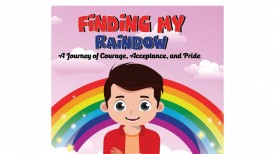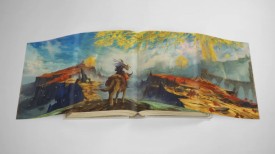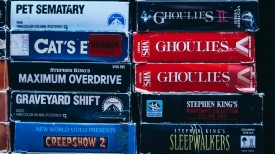Oldest Known Christian Manuscript 'Crosby-Schøyen Codex' Fetches $3.9 Million in Auction

The Crosby-Schøyen Codex, an ancient Christian manuscript tracing back to mid-fourth-century Egypt, recently auctioned for nearly $3.9 million at Christie's in London.(Photo : Unsplash/Thomas Bormans)
The Crosby-Schøyen Codex, a mid-fourth-century Christian manuscript from Egypt, recently fetched nearly $3.9 million at Christie's in London, marking a significant event in the ancient manuscript collection.
This collection, often called the Dishna Papers or the Bodmer Papyri, was found in 1952 among more than 20 other codices close to Dishna, Egypt. It provides essential insights into the early history of Christianity. It has, nevertheless, mainly been eclipsed by other mid-20th century discoveries.
Unnoticed Discovery: Dishna Papers' Ancient Christian Texts
Amidst the buzz generated by discoveries such as the Nag Hammadi codices and the Dead Sea Scrolls, the relatively understated revelation of the Dishna Papers received little attention. While attention-grabbing headlines heralded the revelation of newfound texts and ancient Hebrew scrolls, the manuscripts from Dishna discreetly found their path into the possession of European collectors, dispersing the ancient library across different continents.
Among the treasures of the Dishna Papers is the Crosby-Schøyen Codex, which contains early manuscripts of Luke and John's gospels. These writings, which date to the middle of the fourth century, provide academics with significant insights into the development of the New Testament because they predate nearly every other copy of these gospels that has survived. Some textual differences have resulted in modifications to English Bible translations; for example, the Gospel of John describes Jesus as "the only-begotten Son" rather than "the only-begotten God." These translations now take the information from the Dishna Papers into account.
READ ALSO: Francis Maier's New Book 'True Confessions' Explores the Current State of the US Catholic Church
Apart from the writings that are considered canonical, the Dishna Papers also include a wide range of non-canonical Christian works, such as Paul's "Third Letter to the Corinthians" and "The Shepherd of Hermas." Although these texts are not familiar to readers of the modern Bible, they show the rich and varied literary landscape of early Christianity.
Christian and Secular Influences Interwoven
The eclectic nature of the Dishna Papers extends beyond Christian scripture, encompassing secular works as well. For example, one codex contains comedies by the Hellenistic playwright Menander. Another combines a chapter of Thucydides' "History of the Peloponnesian War" with a Greek version of the biblical Book of Daniel. This blending of Christian and pre-Christian Hellenistic influences reflects the intellectual environment of the time, where pagan classics and Christian scripture coexisted.
Eugenio Donadoni, a senior specialist for books and manuscripts at Christie's, emphasized the text's monumental significance in April, describing it as a crucial witness to the early spread of Christianity across the Mediterranean.
The earliest monks in Upper Egypt utilized the manuscript within the first Christian monastery to celebrate Easter festivities. These writings occurred a few hundred years after Christ's time and approximately a century after the last Gospel was penned. The manuscript comprises several texts, notably featuring the complete epistle of Peter, the Book of Jonah, and an Easter sermon.
Origins of the Crosby-Schøyen Codex
Recent radiocarbon dating of the Crosby-Schøyen Codex has shed light on its origins, placing it firmly in the mid-fourth century. Scholars believe this codex, along with other manuscripts from Dishna, may have been part of an Easter lectionary used in Pachomian monasteries in central Egypt. The Pachomian monks, renowned for their communal monasticism and emphasis on education, likely curated this diverse library, reflecting their interest in both Christian scripture and secular learning.
The ancient biblical text predates renowned texts like the Gutenberg Bible by over a millennium. Preserved on double-sided papyrus leaves encased in plexiglass plates, it showcases advancements in written technology during an era dominated by single-sided scrolls. Alongside this literary gem, 12 other pieces from the Schoyen Collection, which boasts over 20,000 artifacts, were also auctioned.
At present, ownership of a piece of this ancient library comes with a hefty price tag, as evidenced by the multimillion-dollar sale of the Crosby-Schøyen Codex. Despite its quiet beginnings, the Dishna Papers continue to offer valuable insights into early Christianity and its intellectual milieu, reminding us of the rich tapestry of texts that shaped the early Christian world.
RELATED ARTICLE: One of the Oldest Known Books Up for Auction in London, Estimated Value Up to $3.8M
© 2023 Books & Review All rights reserved.
Popular Now
1
Books to Read After 'Fourth Wing': Top Picks for Fantasy and Romantasy Fans

2
‘The Secret Public’ by Jon Savage Book Review: An Insightful Look Into the LGBTQ Influence

3
Stephanie Regalado's 'If They Only Knew' Column Is Now A Book, Unleashing 60 Anonymous True Stories to Empower Women

4
'No Wire Hangers' Scene That Almost Did Not Happen: New Book Reveals Faye Dunaway's Struggles

5
Rare First Edition of Aphra Behn's Novel 'Oroonoko' Discovered in Kent: A Historic Literary Find

Latest Stories
Book Reviews
‘The Secret Public’ by Jon Savage Book Review: An Insightful Look Into the LGBTQ Influence

Book News
Stephanie Regalado's 'If They Only Knew' Column Is Now A Book, Unleashing 60 Anonymous True Stories to Empower Women

Book News
'No Wire Hangers' Scene That Almost Did Not Happen: New Book Reveals Faye Dunaway's Struggles

Book Reviews
‘The Perfect Couple’ by Elin Hilderbrand Book Review: A Captivating Summer Mystery

Book News
New Book ‘The Franchise’ Reveals Penguins President Kyle Dubas’ ‘Biggest Mistake’ as Maple Leafs GM











